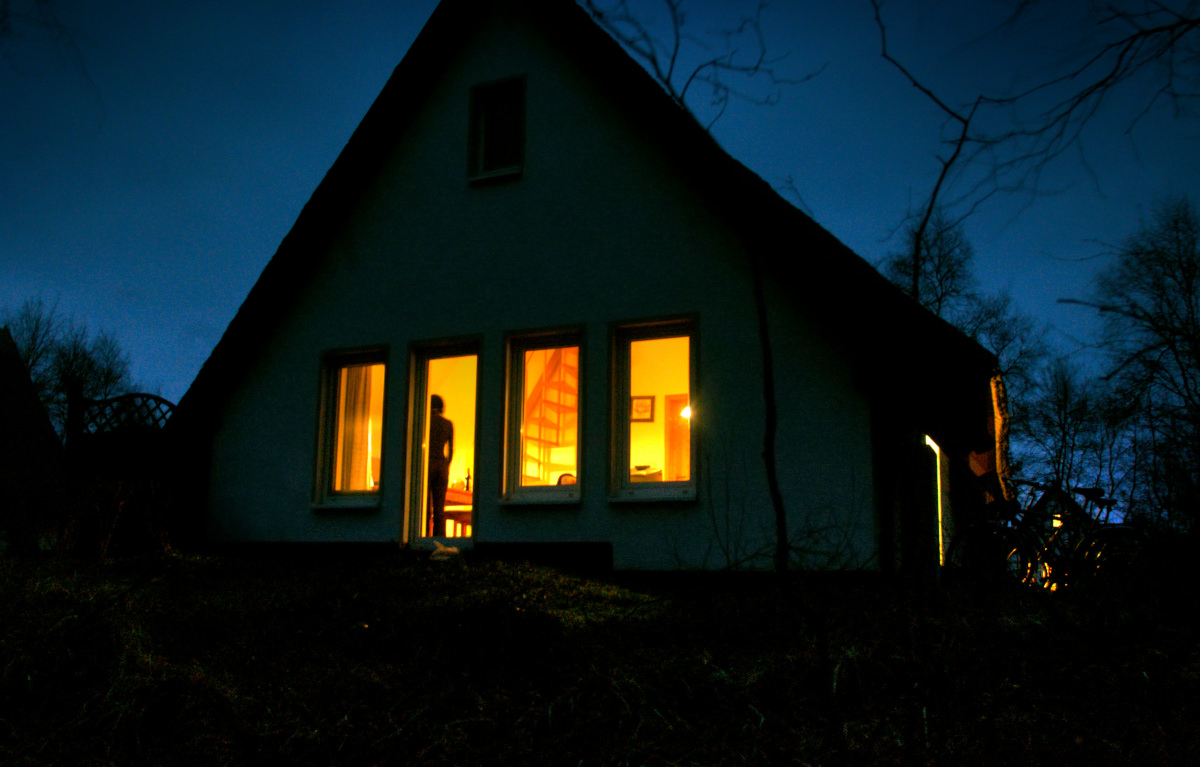
Night vision cameras used to be the preserve of the military, ghost-hunting TV programs and specialist wildlife cameramen. However, almost anyone can now make use of technology – especially when it comes to surveillance and protecting property.
Night vision technology is perhaps most useful for home and business security. Many burglaries and attempted break-ins happen at night, under cover of darkness. While there are things you can do to improve security at night, such as installing motion-sensitive lighting, for example, night vision CCTV cameras are most likely to help you sleep soundly at night. Many surveillance cameras are motion-sensitive and send real-time alerts when movement is detected, so you’ll know instantly if someone is trying to access your property without your permission. But ordinary cameras can’t see in the dark, so they won’t always be able to detect motion and send you that essential alert to your phone. This is where night vision comes in, but how does it work?
Understanding Infrared Night Vision
The most common type of night vision that you’ll find in popular outdoor security cameras such as Spypoint Force cameras is infrared or IR. This technology is very clever, as it floods an area with invisible light that the human eye can’t see – but the camera lens can. A person in the space will see it as pitch black and won’t be able to detect the IR light at all, but the camera will be able to film in fantastic clarity using the bright light produced. We can’t see IR light because it has a longer wavelength and lower frequency than normal light that is visible to the human eye. Red is the colour of the longest wavelengths of visible light, and infrared means ‘below red’. On a typical infrared camera, you’ll spot a special configuration of bulbs being used. High-power infrared LED lights are positioned all around the outside of the camera lens. IR is used for many filming applications and particularly for wildlife film making. This is because the invisible IR light doesn’t disturb animals, as they can’t see it either. This means that secretive nocturnal animals and rarely seen night-time activity can be filmed.Other types of Night Vision
While not commonly used in the home, business or even professional security cameras, there is another type of night vision filming technology. Image intensifier tubes are commonly used in night vision goggles to collect and significantly intensify all available light, including infrared light. This enables the wearer to see in low light or even in near-total darkness. Even when it appears to be completely pitch black, it rarely ever is – there is usually a light source of light, even if the human eye finds it difficult to detect. The light entering the goggles is converted to green, which is why people’s eyes seem to shine so brightly in these images, as human eyes are more sensitive to green than other colours. Night vision goggles that use this technology are most commonly used in military and law enforcement operations.Night Vision CCTV Cameras and gathering evidence
Night vision is so useful in security cameras because it helps them to detect motion more accurately, so they pick up movements by an intruder and can alert you instantly. However, there may be occasions when you or the police can’t get to the property in time, and the intruder or burglar makes an escape. In these situations, your night vision cameras become even more valuable. The clarity of footage they are able to record using IR light and night vision technology means that perpetrators can be more easily identified and hopefully arrested. The footage becomes very useful as evidence, where a normal surveillance camera would pick up a grainy image in poor light or nothing at all in the pitch dark. Many night vision CCTV cameras also come with extra features and functions to further enhance the clarity and quality of the footage. These include blur reduction technology, curved PIR sensors to improve detection angles, extremely high power, and super low-low LED lights. Whether you opt for these more sophisticated cameras depends on your budget and what you’ll use them for.Where and when to use Night Vision Cameras
A night vision camera can be an excellent tool for a wide range of different applications. For example:
- * Capturing wildlife footage - whether you’re trying to identify an unwanted pest or take a precious glimpse of shy nocturnal animals near your property.
- * Protecting your home or business at night or when you’re away from the premises for any period of time - night vision cameras can detect motion and send you an alert no matter where you are in the world.
- * Stopping fly-tippers – if you’ve ever felt frustrated that fly-tipping or other antisocial behaviour always seems to happen at night when you’re not watching, night vision cameras can help you to gather essential evidence to stop it in its tracks.
- * With this technology, you can capture faces, number plates and other details to provide to the authorities. Gathering other types of evidence – a lot of activity takes place under cover of darkness, and night vision cameras can help you keep a sharp eye on what’s going on. This can be very useful in legal or divorce cases, investigative cases, or proof of everyday suspicions.
Night vision cameras can also be more light-hearted, such as catching out a secret night-time fridge raider or revealing what a treasured pet gets up to at night when you’re asleep. It seems that there’s no end to the number and scope of applications for this fantastic technology, and it’ll be very exciting to see what new innovations the makers of surveillance devices come up with next.